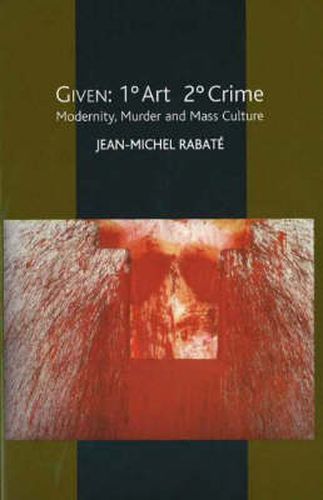Readings Newsletter
Become a Readings Member to make your shopping experience even easier.
Sign in or sign up for free!
You’re not far away from qualifying for FREE standard shipping within Australia
You’ve qualified for FREE standard shipping within Australia
The cart is loading…






Investigates links between avant-garde art and the aesthetics of crime in order to bridge the gap between high modernism and mass culture, as emblematised by tabloid reports of unsolved crimes. Throughout Jean-Michel Rabate is concerned with two key questions: what is it that we enjoy when we read murder stories? and what has modern art to say about murder? Indeed, Rabate compels us to consider whether art itself is a form of murder. The book begins with Marcel Duchamps fascination for trivia and found objects conjoined with his iconoclasm as an anti-artist. The visual parallels between the naked woman at the centre of his final work, Etant Donnes, and a young woman who had been murdered in Los Angeles in January 1947, provides the specific point of departure. The text moves onward to Steven Hodel, the ‘Black Dahlia’ murder; Walter Benjamins description of Eugene Atgets famous photographs of deserted Paris streets as presenting the scene of the crime; and Ralph Roffs 1997 exhibition, which implied that modern art is indissociable from forensic gaze and a detectives outlook, a view first advanced by Edgar Allan Poe.
$9.00 standard shipping within Australia
FREE standard shipping within Australia for orders over $100.00
Express & International shipping calculated at checkout
Investigates links between avant-garde art and the aesthetics of crime in order to bridge the gap between high modernism and mass culture, as emblematised by tabloid reports of unsolved crimes. Throughout Jean-Michel Rabate is concerned with two key questions: what is it that we enjoy when we read murder stories? and what has modern art to say about murder? Indeed, Rabate compels us to consider whether art itself is a form of murder. The book begins with Marcel Duchamps fascination for trivia and found objects conjoined with his iconoclasm as an anti-artist. The visual parallels between the naked woman at the centre of his final work, Etant Donnes, and a young woman who had been murdered in Los Angeles in January 1947, provides the specific point of departure. The text moves onward to Steven Hodel, the ‘Black Dahlia’ murder; Walter Benjamins description of Eugene Atgets famous photographs of deserted Paris streets as presenting the scene of the crime; and Ralph Roffs 1997 exhibition, which implied that modern art is indissociable from forensic gaze and a detectives outlook, a view first advanced by Edgar Allan Poe.